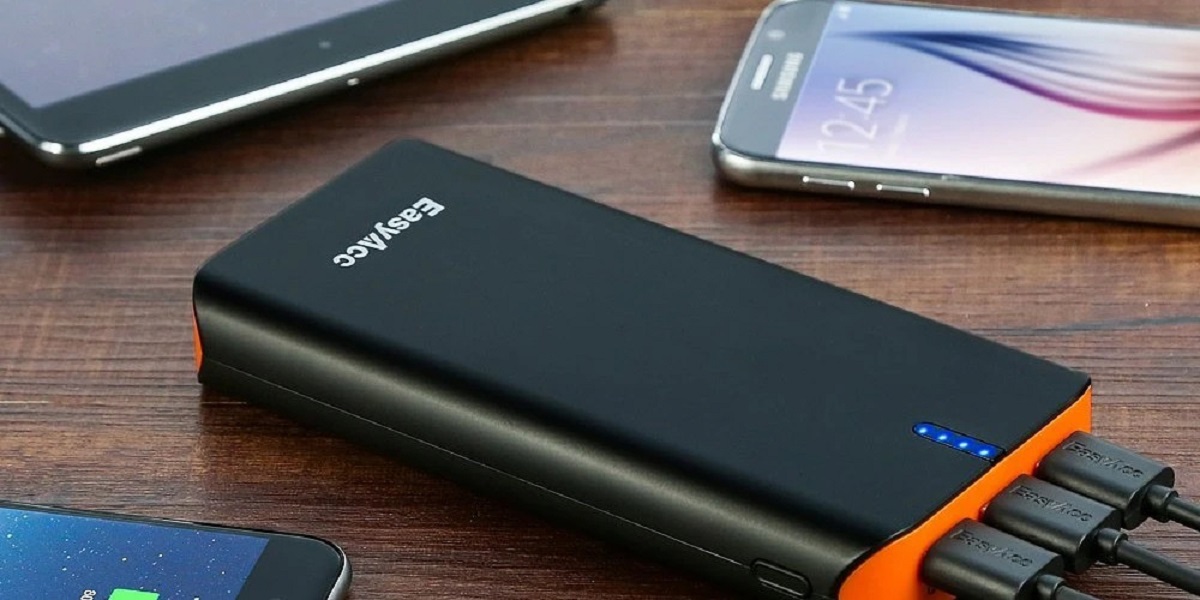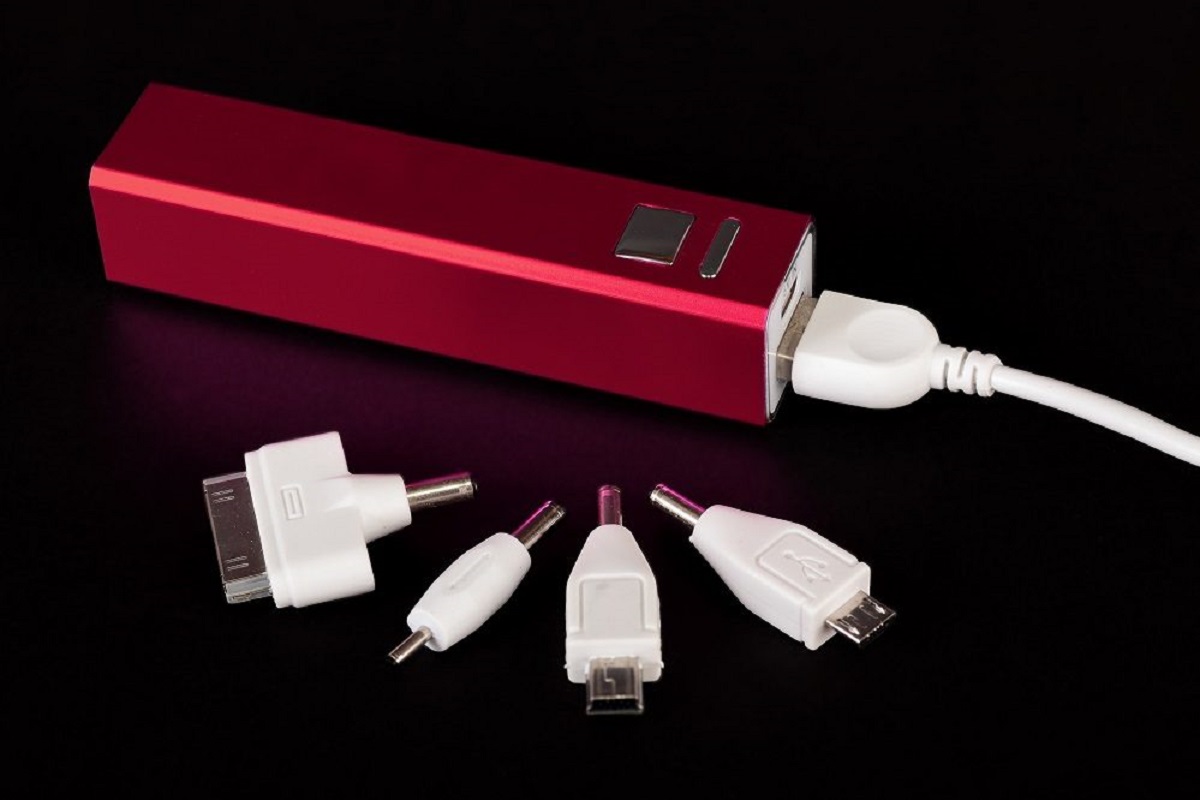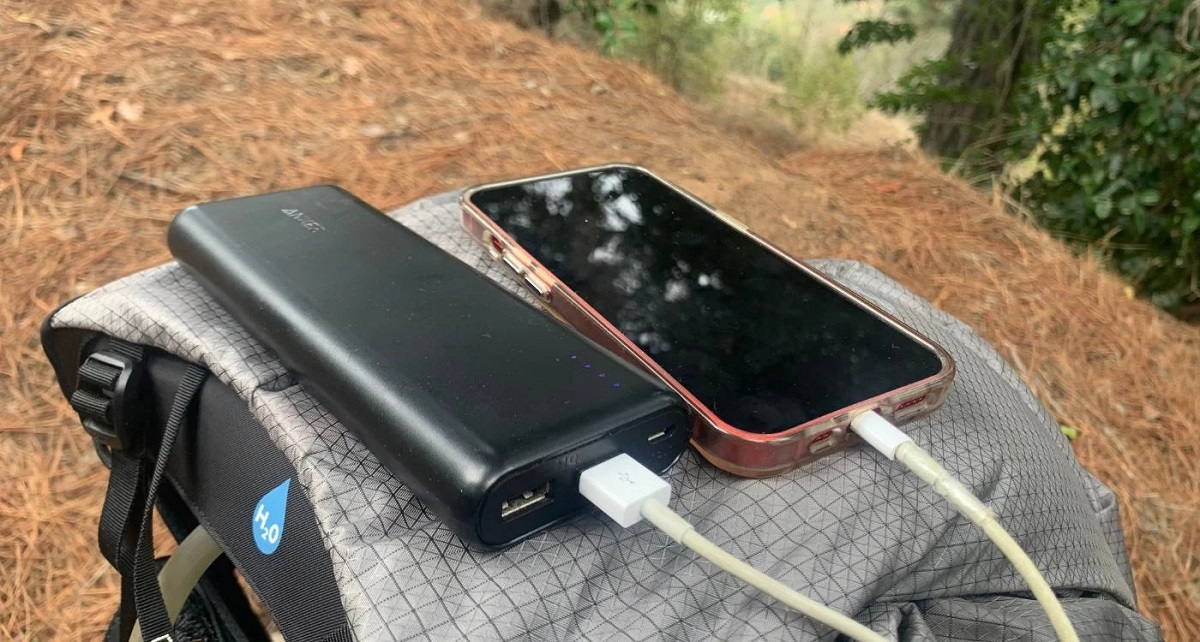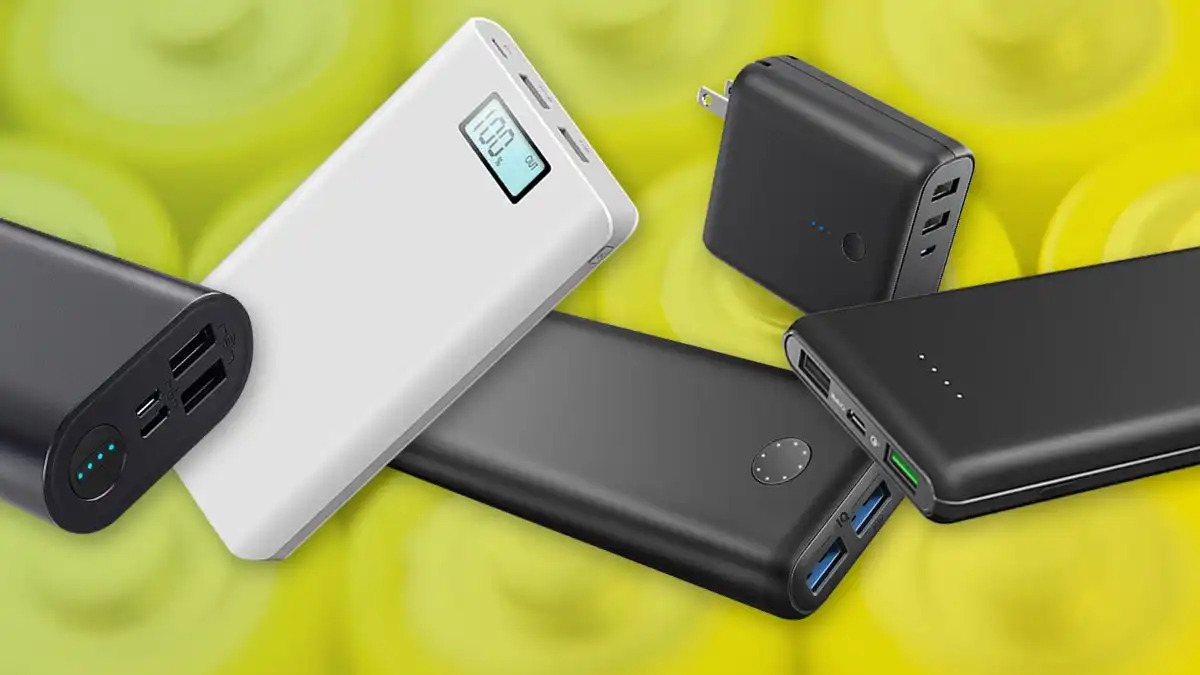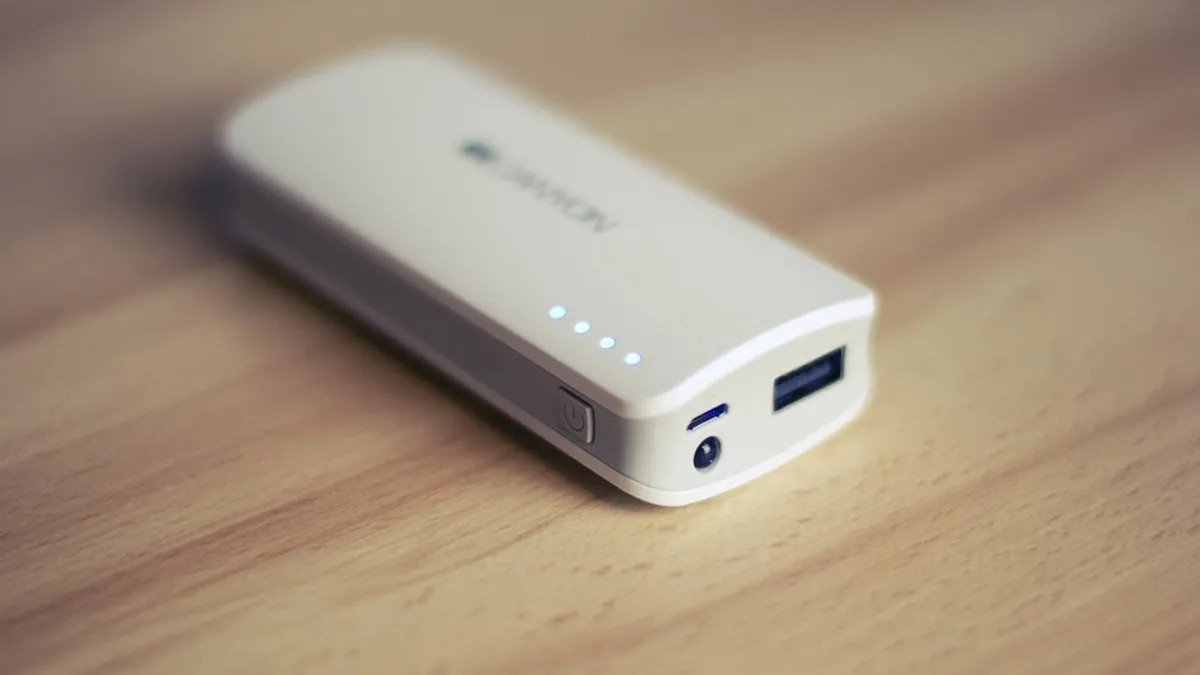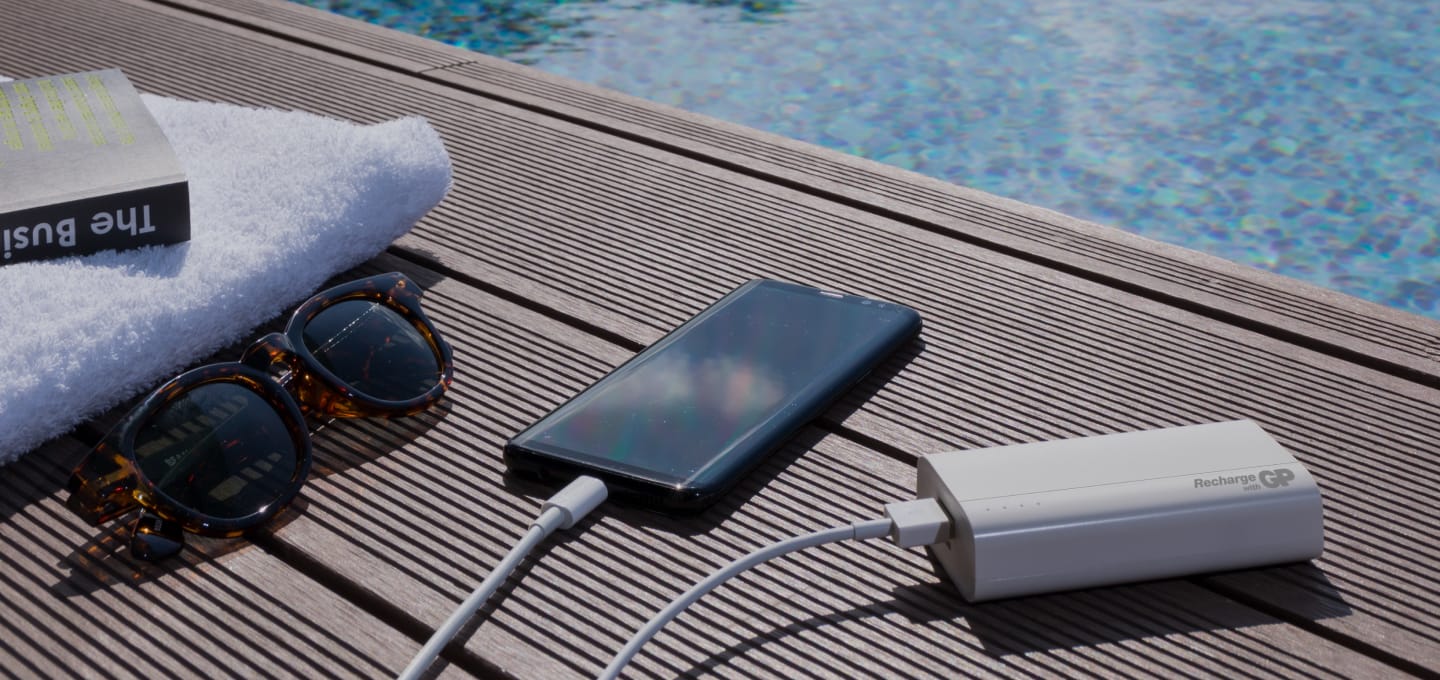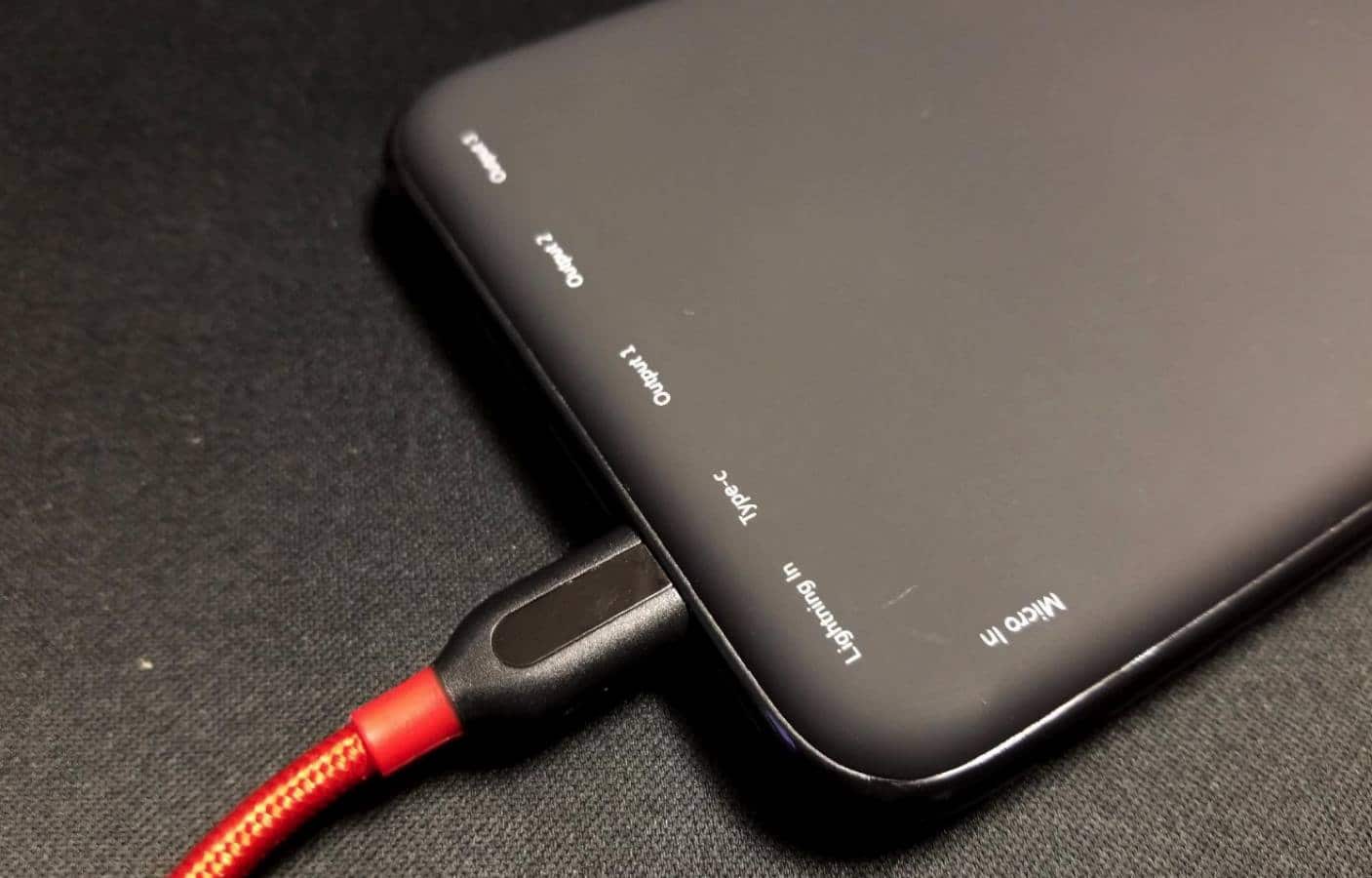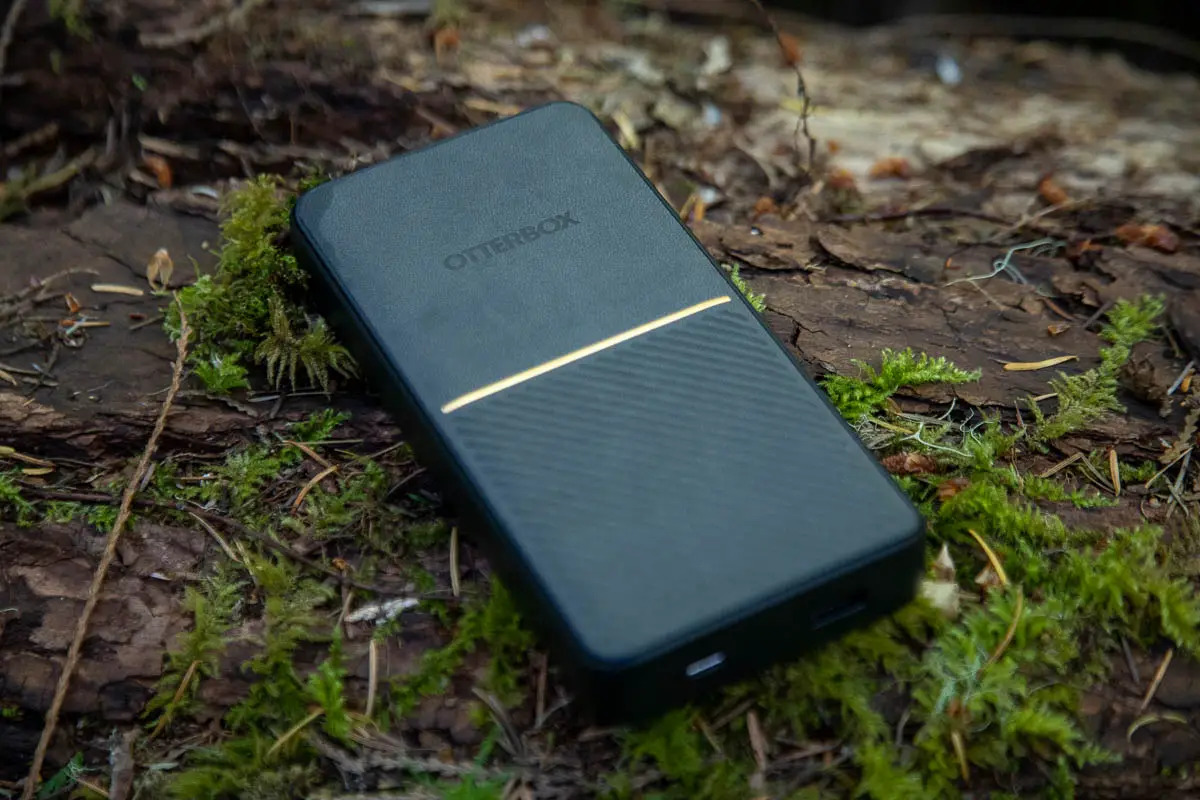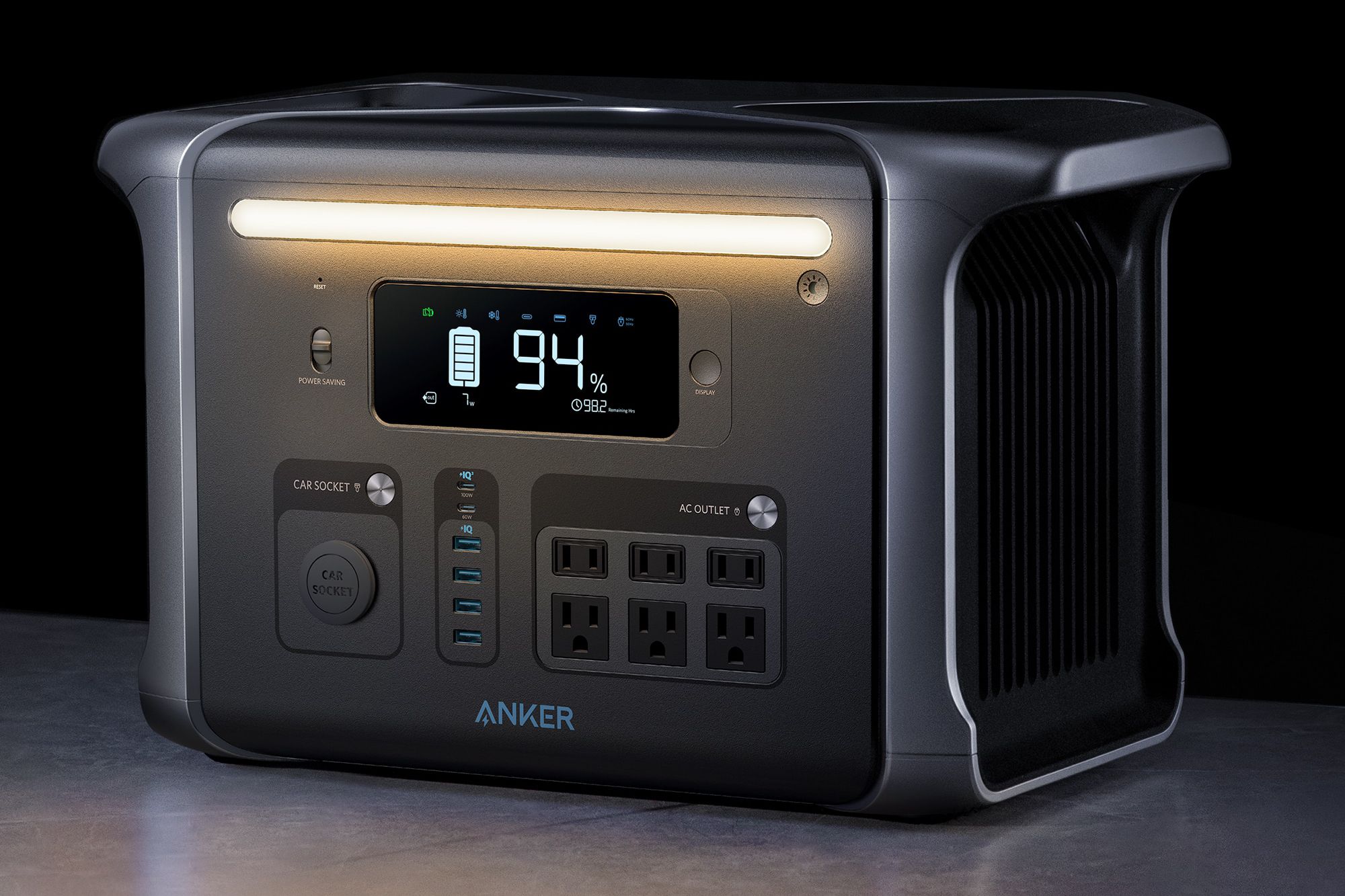Introduction
Welcome to the world of portable power! In today’s fast-paced world, staying connected is essential, whether it’s for work, entertainment, or simply keeping in touch with loved ones. This is where power banks come to the rescue. But what exactly is a power bank?
A power bank, also known as a portable charger, is a compact and portable device that stores electrical energy and allows you to charge your electronic devices on the go. It acts as an external battery pack, providing a convenient solution for those times when you can’t access a power outlet.
With the increasing reliance on smartphones, tablets, and other portable devices, the demand for power banks has skyrocketed. Power banks come in various shapes, sizes, and capacities, catering to the diverse needs of users. From sleek and pocket-sized models to rugged and heavy-duty options, there is a power bank for everyone.
The beauty of a power bank lies in its versatility. It can charge a wide range of devices, including smartphones, tablets, digital cameras, smartwatches, Bluetooth headphones, and more. This makes it the go-to accessory for frequent travelers, outdoor enthusiasts, and anyone who needs a reliable power source on the go.
In this article, we will explore the different types of power banks available, and guide you through the various methods of charging them. Whether you’re looking to charge your power bank from a wall outlet, using a USB cable, or even harnessing solar power, we’ve got you covered. So, let’s dive in and discover the world of power banks and how to effectively charge them.
What is a Power Bank?
A power bank, also known as a portable charger, is a device that stores electrical energy and provides it to mobile devices such as smartphones, tablets, and digital cameras. It serves as an external battery pack that allows you to charge your devices on the go, making it a must-have accessory in today’s digital age.
Power banks typically have a lithium-ion battery inside, which is responsible for storing the electrical energy. The capacity of a power bank is measured in milliampere-hours (mAh) and indicates the amount of energy it can hold. A higher capacity power bank can provide more charges to your devices before needing to be recharged itself.
One of the key features of a power bank is its portability. It is designed to be compact, lightweight, and easy to carry, making it ideal for travel, outdoor activities, or simply for everyday convenience. Some power banks are small enough to fit in your pocket, while others are larger and provide more power capacity.
Power banks come with various charging ports, such as USB-A, USB-C, micro USB, and lightning, to accommodate different devices. They also offer different output voltages and current levels to cater to the charging requirements of various devices.
Additionally, power banks often come equipped with features like LED indicators to display the remaining battery power, built-in safety mechanisms to protect against overcharging and short circuits, and even multiple charging ports to charge multiple devices simultaneously.
Power banks offer a convenient and reliable way to extend the battery life of your devices when you don’t have access to a power outlet. Whether you’re traveling, camping, attending conferences, or simply out and about, a power bank ensures that you can stay connected and powered up whenever you need it.
Now that we understand what a power bank is and its basic functionality, let’s explore the different types of power banks available in the market.
Different Types of Power Banks
Power banks come in various types, each with its own features and capabilities. Understanding the different types can help you choose the right power bank based on your specific needs and requirements. Let’s take a closer look at some of the most common types of power banks available:
- Standard Power Banks: These are the most commonly used power banks, available in a wide range of capacities and sizes. They usually have one or more USB output ports and can charge multiple devices simultaneously. Standard power banks are versatile and compatible with various devices, making them suitable for everyday use.
- Solar Power Banks: Solar power banks utilize solar panels to charge their internal batteries using sunlight. They are perfect for outdoor enthusiasts who spend a lot of time in the sun and away from power outlets. While solar charging is a slow process, it provides a sustainable and eco-friendly way to keep your devices powered up in remote locations.
- Wireless Power Banks: These power banks incorporate wireless charging technology, allowing you to charge compatible devices simply by placing them on top of the power bank. This eliminates the need for cables and provides a convenient charging experience. Wireless power banks often come with additional USB ports for wired charging as well.
- High-Capacity Power Banks: For those who require extended charging capacity, high-capacity power banks are the ideal choice. These power banks have larger battery capacities, often exceeding 20,000mAh, and can provide multiple charges to high-demand devices like tablets and laptops. They are bulkier and heavier than standard power banks, but they offer the advantage of prolonged power supply.
- Ultra-Compact Power Banks: If portability is your top priority, ultra-compact power banks are designed with a small form factor and lightweight construction. These power banks easily fit into your pocket or purse and are perfect for emergency use or quick top-ups on the go.
It’s worth noting that power banks come in various price ranges as well. Higher-priced power banks often offer additional features, faster charging speeds, and greater reliability. Consider your usage requirements and budget when selecting the right power bank for your needs.
Now that we’ve explored the different types of power banks, let’s move on to the next section to learn how to effectively charge these portable power sources.
Charging a Power Bank
Charging a power bank is a straightforward process, but understanding the different methods and best practices can help maximize its efficiency and prolong its lifespan. Here are the various ways you can charge a power bank:
Using a Wall Outlet Charger: The most common and reliable method is to charge your power bank using a wall outlet charger. Most power banks come with a USB charging cable that can be connected to the wall outlet charger. Simply plug one end of the cable into the power bank and the other end into the charger, then plug the charger into a wall outlet. The power bank will start charging, and the LED indicator will indicate the progress. Make sure to use the charger provided with the power bank or a high-quality charger to ensure safe and efficient charging.
Charging with a USB Cable: Another common method is to charge the power bank using a USB cable connected to a computer or laptop. Simply connect one end of the USB cable to the power bank and the other end to a USB port on your computer or laptop. The power bank will start charging automatically. This method is convenient when you don’t have access to a wall outlet charger but can use your computer or laptop for charging.
Charging a Power Bank with Solar Power: Some power banks come with built-in solar panels, allowing them to be charged using sunlight. To charge a solar power bank, place it under direct sunlight and ensure the solar panels are exposed to the sun. Keep in mind that solar charging is a slow process and may take several hours or even days to fully charge the power bank, depending on the sunlight intensity. Solar charging is best suited for emergency situations or situations where you have ample sunlight and no access to electrical outlets.
Regardless of the charging method, it is essential to follow a few best practices:
- Use the provided or high-quality charging cable to avoid any compatibility issues.
- Avoid using third-party or counterfeit chargers, as they may not provide the necessary voltage and current required for the power bank.
- Avoid overcharging the power bank by disconnecting it from the power source once it is fully charged. Overcharging can degrade the battery life over time.
- Keep the power bank away from extreme temperatures and direct sunlight, as it can affect its performance and longevity.
By following these guidelines, you can ensure proper charging of your power bank and maintain its effectiveness for longer periods.
Now that you know how to charge a power bank, let’s explore the recommended charging methods for optimal results in the next section.
Using a Wall Outlet Charger
Charging a power bank using a wall outlet charger is the most common and reliable method. It allows for faster and more efficient charging compared to other methods. Here’s a step-by-step guide on how to charge your power bank using a wall outlet charger:
- Check the power bank: Ensure that your power bank has enough remaining battery capacity before you start charging it. Most power banks come with LED indicators that show the current battery level. It’s recommended to charge the power bank when it has around 25% or less battery remaining.
- Connect the charging cable: Plug one end of the USB charging cable into the power bank’s charging port. Make sure to insert the cable securely to ensure a stable connection.
- Connect the wall outlet charger: Plug the other end of the charging cable into the USB port of the wall outlet charger. Choose a wall outlet charger that is compatible with your power bank and provides the necessary voltage and current for efficient charging. It’s best to use the charger that came with your power bank or invest in a reputable charger that provides fast and safe charging.
- Plug into the wall outlet: Plug the wall outlet charger into a standard electrical wall outlet. Ensure that the outlet is functioning properly and is in good condition to prevent any electrical issues.
- Monitor the charging progress: Look for the LED indicator on the power bank to determine the charging progress. The LED indicator may have different colors or patterns to indicate different charging stages. Some power banks have multiple LEDs to show the battery level more accurately. Allow the power bank to charge until it reaches a full battery level.
- Unplug the charger: Once the power bank is fully charged, unplug the wall outlet charger from the electrical wall outlet and disconnect the charging cable from the power bank. This prevents overcharging, which can potentially shorten the lifespan of the power bank’s battery.
It’s important to note that the charging time may vary depending on the capacity of the power bank and the output current of the wall outlet charger. Higher-capacity power banks generally take longer to charge fully. Some power banks feature fast-charging technology that allows for quicker charging times, provided you have a compatible wall outlet charger and charging cable.
Using a wall outlet charger to charge your power bank ensures a reliable and efficient charging experience. It’s a convenient method that guarantees your power bank will be fully charged and ready to provide portable power whenever you need it.
Next, we’ll explore another popular method of charging a power bank: using a USB cable connected to a computer or laptop.
Charging with a USB Cable
Charging a power bank with a USB cable is a convenient method, especially when you don’t have access to a wall outlet charger but have a computer or laptop nearby. It allows you to charge your power bank using the USB ports on your computer or laptop. Here’s a step-by-step guide on how to charge your power bank with a USB cable:
- Check the power bank: Verify that your power bank has sufficient battery capacity remaining. If the battery level is too low, it’s recommended to charge it using a wall outlet charger for faster charging before using the USB cable method.
- Connect the USB cable: Take one end of the USB charging cable and plug it into the power bank’s charging port. Ensure a secure connection for a stable charging process.
- Connect the USB cable to the computer: Plug the other end of the USB cable into an available USB port on your computer or laptop. It’s important to use a reliable USB cable, preferably the one provided with your power bank or a high-quality USB cable that can deliver the necessary power for charging.
- Start the charging process: Once the connection is established, your power bank will start charging automatically. Some power banks have an LED indicator that shows the charging status. Monitor the LED indicator to ensure the charging process is underway.
- Monitor the charging progress: Keep an eye on the LED indicator or any other charging status indicators on your power bank. Allow the power bank to charge until it reaches its full capacity. The charging time may vary depending on the power bank’s capacity, the USB port’s output current, and the charging cable’s quality.
- Disconnect the USB cable: Once the power bank is fully charged, carefully unplug the USB cable from the computer or laptop and disconnect it from the power bank’s charging port. It’s crucial to disconnect the cable properly to avoid any damage to the power bank or the computer.
Keep in mind that charging your power bank using a USB cable connected to a computer or laptop may take longer compared to using a wall outlet charger. The charging speed is generally slower, as the USB ports on computers and laptops typically provide lower current output. However, this method is useful when a wall outlet charger is not available or when you’re in a situation where using a computer or laptop is more convenient.
Make sure to use a reliable USB cable and choose a USB port that can deliver sufficient power for efficient charging. Avoid using USB hubs or ports with low power output, as this can significantly extend the charging time.
Now that you know how to charge a power bank using a USB cable, let’s move on to the next section to explore another intriguing method: charging a power bank with solar power.
Charging a Power Bank with Solar Power
Charging a power bank with solar power provides a sustainable and eco-friendly way to keep your devices charged, especially when you’re in outdoor environments and have access to sunlight. Solar power banks feature built-in solar panels that harness solar energy to charge their internal batteries. Here’s a step-by-step guide on how to charge a power bank with solar power:
- Choose a sunny location: Find a spot that receives ample sunlight, preferably outside, where the solar panels on the power bank can be exposed to direct sunlight without any obstructions.
- Position the solar power bank: Place the solar power bank in a way that allows the solar panels to receive maximum sunlight exposure. Follow the manufacturer’s instructions for the best positioning.
- Monitor the charging status: Most solar power banks have LED indicators that display the charging status. Keep an eye on the LED indicators to ensure that the power bank is successfully charging. It’s important to note that solar charging is slower compared to other methods, so you may need to be patient and allow ample time for the power bank to charge.
- Keep the solar power bank in sunlight: Leave the solar power bank in direct sunlight for as long as needed to charge it fully. The exact charging time will depend on various factors, including the capacity of the power bank and the intensity of sunlight. Some devices may take several hours or even days to complete a full charge via solar power.
- Use alternative charging methods if needed: If you’re in a situation where sunlight is limited or not available, you can still charge your power bank using alternative methods, such as a wall outlet charger or a USB cable connected to a computer or laptop. Solar charging should be treated as a supplementary method rather than the primary method.
- Protect the solar power bank: When not in use, ensure that the solar power bank is stored in a safe place away from extreme temperatures, moisture, and physical damage. Proper storage and care can prolong the lifespan of the power bank and ensure its efficient performance.
It’s important to note that charging a power bank with solar power may take longer compared to traditional charging methods, especially on cloudy or overcast days. The solar charging speed can also vary depending on the capacity of the power bank and the efficiency of the solar panels. However, the ability to harness renewable energy and charge your devices in remote locations make solar power banks a valuable asset for outdoor enthusiasts and those concerned with sustainable energy sources.
Now that you’re familiar with charging a power bank using solar power, let’s move on to the next section to explore the recommended charging methods for optimal results.
Recommended Charging Methods
To ensure efficient and safe charging of your power bank, it’s important to follow recommended charging methods. By adopting these practices, you can extend the lifespan of your power bank and enjoy reliable portable power. Here are some recommended charging methods:
- Use the provided or high-quality charging cables: It’s recommended to use the charging cables that come with your power bank or invest in high-quality cables from reputable brands. These cables are designed to deliver the necessary voltage and current required for efficient and safe charging.
- Choose a compatible wall outlet charger: When using a wall outlet charger, make sure it is compatible with your power bank. Look for a charger that provides the appropriate voltage and current output. Using the wrong charger can result in slow charging or even damage the power bank.
- Avoid overcharging: Overcharging can degrade the battery life of your power bank, so it’s important to disconnect it from the power source once it is fully charged. Most power banks come with LED indicators that show the charging status. Pay attention to these indicators and unplug the power bank promptly when it reaches full capacity.
- Regularly charge and discharge: It’s recommended to use your power bank regularly and not let it sit unused for long periods. Regularly charging and discharging your power bank helps to maintain its battery health. It’s also a good practice to give your power bank a full charge and discharge cycle every few months to calibrate the battery’s charge level.
- Avoid high temperatures and direct sunlight: Heat can damage the battery of your power bank, so it’s important to keep it away from sources of high temperatures. Avoid leaving your power bank in direct sunlight or exposed to extreme heat. High temperatures can reduce the battery’s capacity and affect its performance.
- Store your power bank properly: When not in use, store your power bank in a cool and dry place. Avoid storing it in areas with high humidity, as moisture can damage the internal components. Also, protect your power bank from physical damage by keeping it in a protective case or pouch.
By following these recommended charging methods, you can optimize the performance and lifespan of your power bank. Additionally, it’s always a good idea to refer to the manufacturer’s guidelines and instructions specific to your power bank to ensure proper usage and charging practices.
Now that you are well-informed about the recommended charging methods, let’s wrap up this article with a recap of the information discussed.
Conclusion
Power banks have become an essential tool in our modern, connected world. They provide a convenient and reliable solution for charging our electronic devices on the go, ensuring we stay connected and powered up at all times. Understanding how to effectively charge a power bank is crucial for maximizing its performance and lifespan.
In this article, we explored what a power bank is and how it works. We discussed the different types of power banks available, including standard power banks, solar power banks, wireless power banks, high-capacity power banks, and ultra-compact power banks. Each type offers unique features to cater to various needs and preferences.
We also looked at different charging methods, such as using a wall outlet charger, USB cable, or harnessing solar power. Each method has its advantages and considerations, allowing you to choose the most suitable option based on your specific situation.
Furthermore, we highlighted the importance of following recommended charging practices, such as using high-quality cables, avoiding overcharging, regularly charging and discharging the power bank, and storing it properly. These practices help maintain the battery life and optimize the performance of your power bank.
Remember to choose a power bank with a suitable capacity for your needs, as larger capacity power banks provide more charges before needing to be recharged themselves. Consider the charging speed, weight, size, and additional features when selecting a power bank that aligns with your lifestyle and preferences.
By following the guidelines outlined in this article, you can ensure efficient and safe charging of your power bank, which means you’ll always have a reliable power source to keep your devices charged and stay connected wherever you go.
So go ahead and enjoy the convenience of a power bank, and never worry about running out of battery power again!







